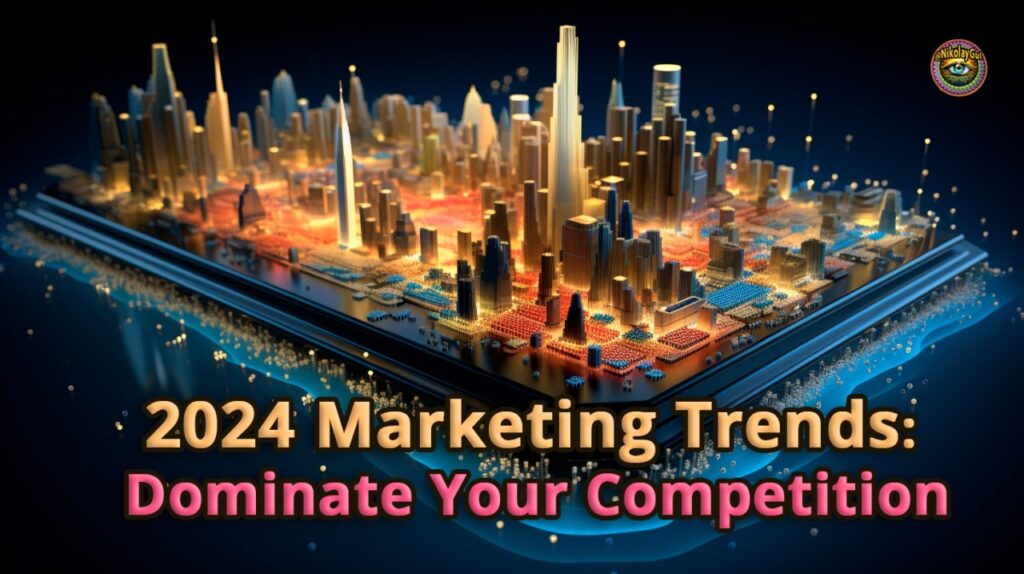
In a rapidly evolving digital landscape, marketing strategies are continually reshaping to capture the attention of consumers. As we step into 2024, businesses must stay ahead of the curve by embracing innovative marketing trends that break the mold and redefine the way we connect with our audience.
Introduction
Stay ahead in 2024! Dive into our guide to uncover groundbreaking marketing trends shaping the future. Explore innovative strategies, cutting-edge tech, and consumer insights for a marketing playbook that stands out. Don’t miss the chance to revolutionize your approach – read now and break free from traditional methods!
1. Metaverse Marketing:
The concept of the metaverse has transcended from science fiction to a tangible reality, and savvy marketers are quick to harness its potential. Brands are exploring virtual spaces to connect with consumers in immersive environments. From virtual product launches to interactive experiences, the metaverse is becoming a new frontier for customer engagement and brand building.
2. AI-Driven Personalization:
Artificial Intelligence is revolutionizing the way marketers tailor their messages. In 2024, AI algorithms will go beyond basic personalization by predicting consumer behavior, preferences, and even emotions. This level of personalization ensures that customers receive content that resonates with them, leading to higher engagement and conversion rates.
3. Sustainability-Centric Marketing:
Consumers are increasingly environmentally conscious, and brands are taking note. Sustainable and eco-friendly practices are not just buzzwords but integral components of marketing strategies. Brands that genuinely embrace and communicate their commitment to sustainability will gain a competitive edge, appealing to a growing demographic of eco-conscious consumers.
4. Voice Search Optimization:
With the rise of virtual assistants and smart speakers, voice search is on the ascent. Optimizing content for voice searches is crucial for ensuring that brands remain discoverable in this space. Marketers will need to adapt their SEO strategies to accommodate conversational queries and long-tail keywords, reflecting the way people naturally speak.
5. Augmented Reality (AR) Shopping Experiences:
AR is reshaping the e-commerce landscape by providing users with immersive shopping experiences. Brands are leveraging AR to allow customers to virtually try products before purchasing, enhancing the online shopping experience. This trend is particularly relevant for industries like fashion, beauty, and home decor.
6. Interactive Content:
Static content is taking a backseat as interactive content gains traction. Polls, quizzes, and interactive videos are just a few examples of how brands are actively involving their audience. This not only fosters engagement but also provides valuable data for further customization of marketing strategies.
7. Micro-Influencers and Authenticity:
The era of mega-influencers may be waning as consumers crave more authenticity. Micro-influencers, with smaller but more engaged followings, are becoming valuable assets for brands. Authenticity is key, and customers are more likely to trust recommendations from relatable influencers who genuinely connect with their audience.
8. 5G-Powered Experiences:
The rollout of 5G technology is unlocking new possibilities for marketers. Faster internet speeds and lower latency enable real-time, high-quality experiences. From interactive live streams to seamless augmented reality applications, 5G is catalyzing a shift towards more dynamic and engaging content.
Conclusion
As we navigate through 2024, the marketing landscape is evolving at an unprecedented pace. Embracing these innovative trends will be instrumental for businesses looking to break the mold and stay ahead of the competition. From the metaverse to AI-driven personalization, the key lies in understanding and adapting to the changing preferences of the modern consumer. In this era of constant innovation, successful marketers will be those who cannot only keep up with the trends but also anticipate the next wave of transformative strategies.
